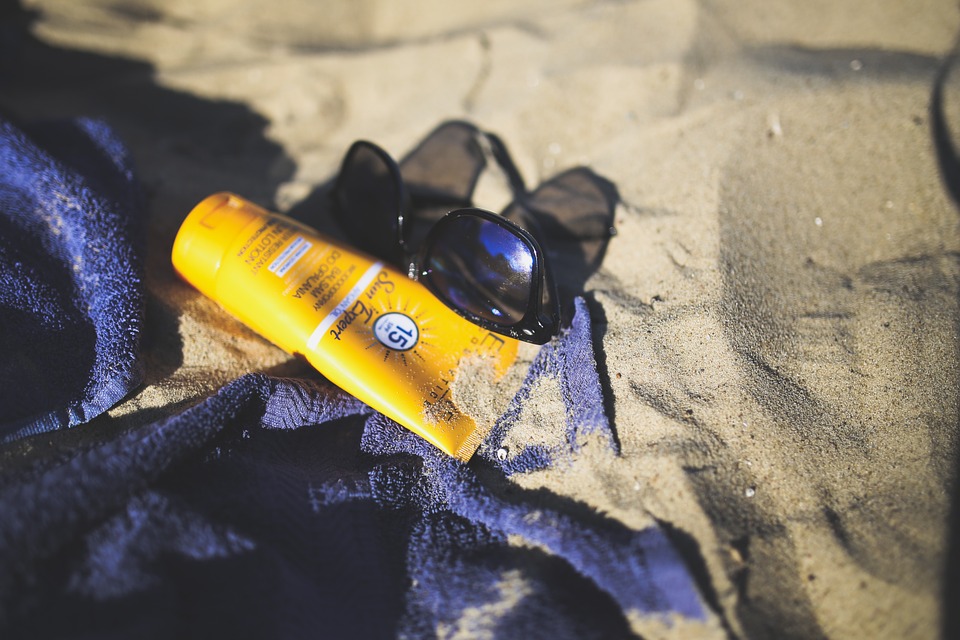Being in the sun too long can cause sunburns and skin cancer. It is important to wear sunscreen and take other sun safety steps to protect yourself from the sun’s harmful ultraviolet radiation (UV rays).
Sunscreen safety tips
- Choose a high SPF. Protect your health by using a broad-spectrum sunscreen with a Sun Protection Factor (SPF) of at least 15. The sunscreen should also say “broad-spectrum” on the label, to screen out most of the UVA and UVB rays.
- Look for “water resistant”. Look for claims on the label that the product stays on better in water (water resistant, very water resistant).
- Read application instructions. For best results, be sure to follow the instructions on the product label.
- Use lots of sunscreen. Use the recommended amount of sunscreen.
- Apply it early. Apply sunscreen 20 minutes before you go outside; reapply 20 minutes after going outside and at least every 2 hours after that. Use a generous amount. Cover exposed areas generously, including ears, nose, the tops of feet and backs of knees.
- Reapply often. Reapply sunscreen often to get the best possible protection especially if you are swimming or sweating heavily.
- Protect yourself. Sunscreen and insect repellents can be used safely together. Apply the sunscreen first, then the insect repellent.
- Sunscreens and babies. Do not put sunscreen on babies less than 6 months of age. Keep them out of the sun and heat as their skin and bodies are much more sensitive than an adult’s.
- Test for an allergic reaction. Before using any tanning product on you or your child check for an allergic reaction, especially if you have sensitive skin. Apply it to a small patch of skin on the inner forearm for several days in a row. If the skin turns red or otherwise reacts, change products.
Sun safety tips
- Cover up. Wear light-coloured long sleeved shirts, pants and a wide brimmed hat made from breathable fabric. When you buy sunglasses, make sure they provide protection against both UVA and UVB rays.
- Limit your time in the sun. Keep out of the sun and heat between 11 a.m. and 4 p.m. When your shadow is shorter than you, the sun is very strong. Look for places with lots of shade, like a park with big trees, partial roofs, awnings, umbrellas or gazebo tents. Always take an umbrella to the beach.
- Protect yourself. Reflections off snow, water, sand, and concrete can increase the effect of UV rays. You need to protect yourself on cloudy days, when you’re swimming, and even while skiing.
- Use the UV Index forecast. Tune into local radio and TV stations or check online for the UV index forecast in your area. When the UV index is 3 or higher, wear protective clothing, sunglasses and sunscreen.
- Use sunscreen. Put sunscreen on when the UV index is 3 or more.
- Drink plenty of cool liquids (especially water) before you feel thirsty. If sunny days are also hot and humid, stay cool and hydrated to avoid heat illness. Dehydration (not having enough fluids in your body) is dangerous, and thirst is not a good indicator of dehydration.
- Avoid using tanning beds. If you do use them, understand the risks and learn how to protect yourself.
How sunscreens protect your health
Exposure to UV rays, mainly UVB, can cause sunburns and may eventually cause skin cancer. While sunscreens can help reduce sunburn, they are not as effective against the other harmful effects of UV rays, like premature aging of the skin and weakening of the immune system.
All sunscreens have a sun protection factor (SPF) on their labels. The SPF tells you the length of time that your sunscreen-protected skin can be exposed to UVB rays before it starts to get red, compared to the length of time it takes on your unprotected skin. In other words, it tells you how much longer you can be exposed to the sun before getting a sunburn.
The amount of time it takes for unprotected skin to burn depends on skin type. In general, fair skin burns more quickly than darker skin.
If you have the type of skin that would burn after 20 minutes in the sun without protection, then properly applying sunscreen with SPF 15 would allow you to spend up to 300 minutes (15 times longer) in the sun without getting a sunburn. However, this does not mean that your skin is protected from all UV effects. Damage to your skin, other than sunburning, may have already started.
The SPF varies depending on the nature of the sunblocking ingredients in the product. Since the SPF refers only to protection against UVB, it is important to choose a “broad-spectrum” sunscreen that also protects you from UVA radiation.
Resource: https://www.canada.ca/en/health-canada/services/sun-safety.html
